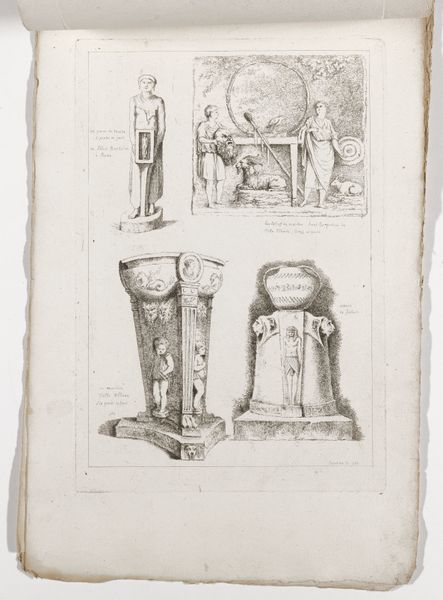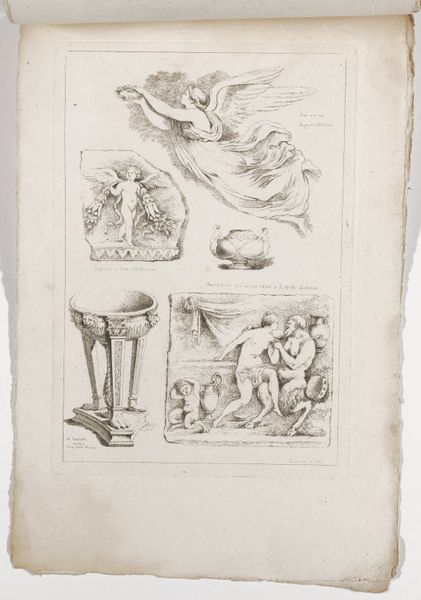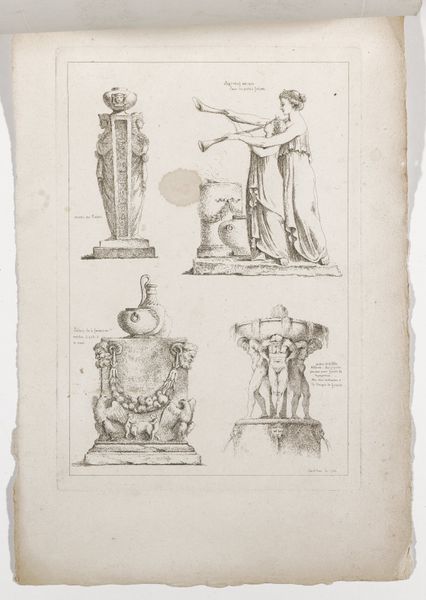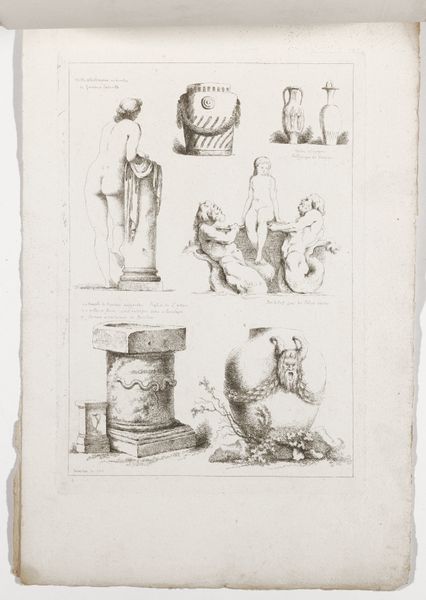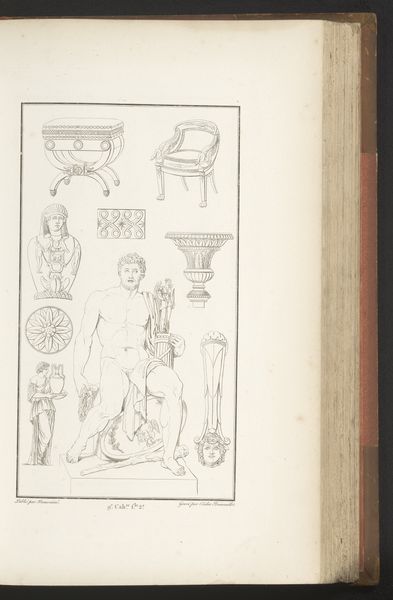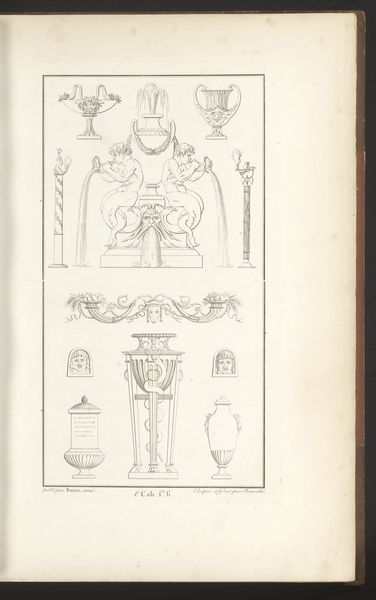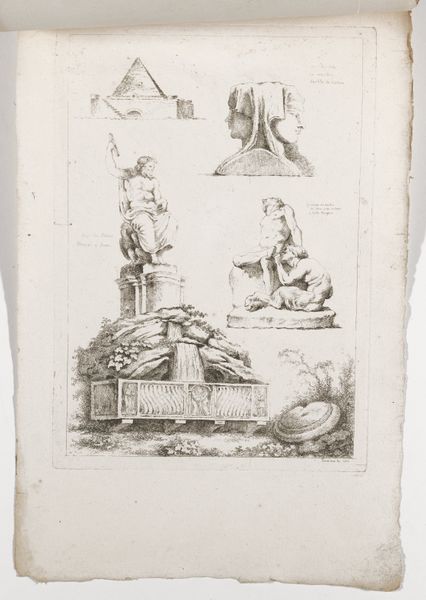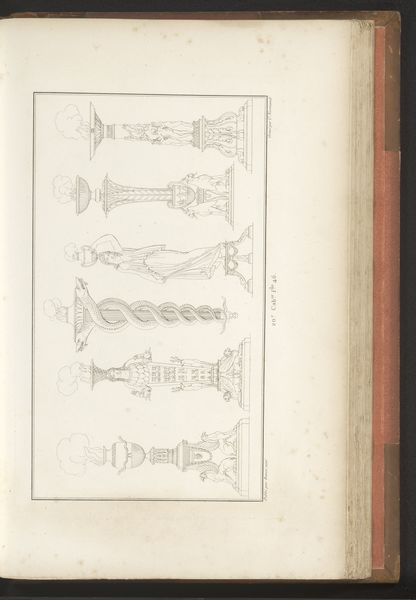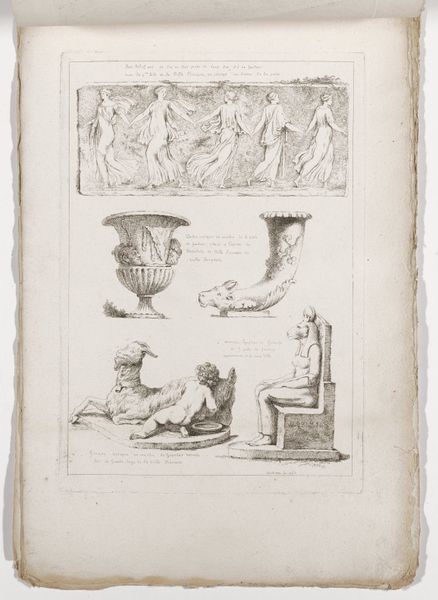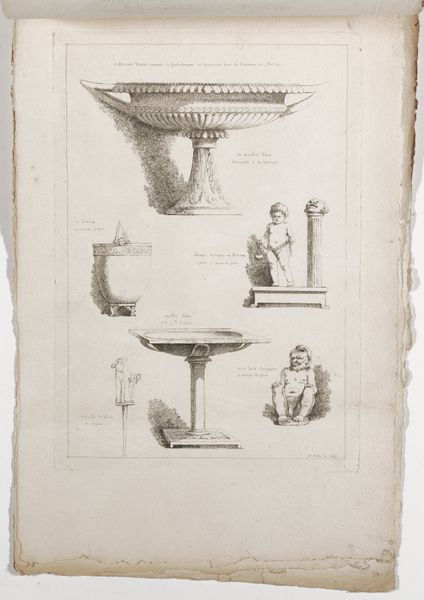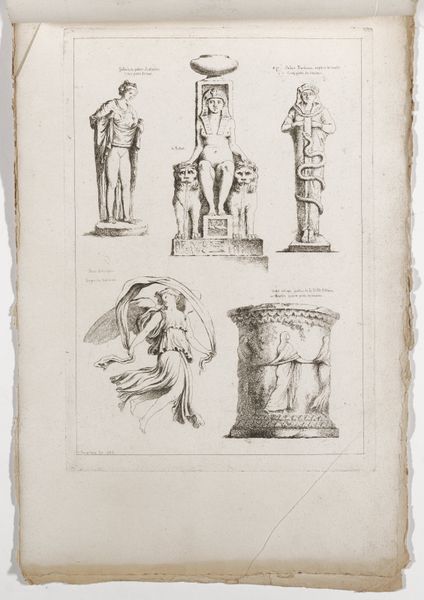
drawing, print, etching, engraving
#
drawing
#
neoclassicism
# print
#
etching
#
15_18th-century
#
france
#
engraving
Dimensions: 12 7/8 × 9 in. (32.7 × 22.86 cm) (plate)16 1/2 × 11 1/2 in. (41.91 × 29.21 cm) (sheet)
Copyright: Public Domain
Jean-Claude Richard, Abbé de Saint-Non, made this print, titled 'Fascicule I' using etching. It's an encyclopedic collection of images that gives us insight into the visual culture of 18th century France. We see a variety of objects rendered in a precise, academic style. From furniture to relief sculpture, the focus is on classical forms, reflecting the period’s obsession with antiquity. This interest was fueled by archaeological discoveries, such as Pompeii, which shaped artistic tastes and collecting habits. Consider the social context: the Abbé de Saint-Non was part of a network of scholars, artists, and aristocrats who sought to elevate French taste through the study and imitation of classical art. Prints like these were crucial in disseminating knowledge and standardizing artistic styles across Europe. These images speak to the power of institutions, like the French Royal Academy, to shape art and culture. As historians, we examine letters, inventories, and treatises to reveal the complex interplay of art, power, and social life in 18th century France.
Comments
minneapolisinstituteofart almost 2 years ago
⋮
The Jean-Baptiste Claude Richard (also known by his title abbé Saint-Non) embodied the important role of the amateur, an patron and connoisseur of the arts as well as a practitioner in 18th-century France. He was a skilled networker, a curious, innovative printmaker, and he supported his artist friends in their projects and travels. Saint-Non executed this suite of prints in Paris in 1763, representing antique fragments and reliefs he saw during his travels in Italy from 1759 to 1761. Most of the monuments are identified in the inscriptions by their locations in Rome. The works reflect French artists’ fascination with antiquity at the time, and the way in which these sources were transmitted to a larger public through the circulation of prints. Remarkably the suite of etchings remain as originally issued, in three groups of six deckle-edged sheets stitched together simply along the top edge.
Join the conversation
Join millions of artists and users on Artera today and experience the ultimate creative platform.
